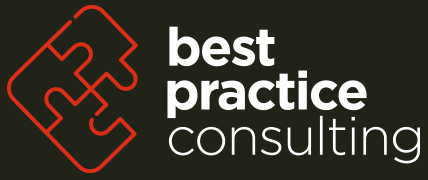Everyone has experienced conflict in the workplace; however, few people are able to escape its fallout. And while no office is immune to conflict, how we manage conflict can make an enormous difference to the outcome(s), the impact on others and workplace culture.
- So, as leader, what do you do about workplace conflict?
- Are you even aware it is happening?
- Do you actively identify when it is starting to affect work place morale and productivity?
- Do you get caught up in the middle of the conflict?
- Or do you do nothing, hoping the people involved will eventually sort it out themselves, or leave?
As a leader in your organisation, you are responsible for creating a workplace environment that achieves productive outcomes, values the individual and encourages sharing between team members. Leaders are also responsible for mediating conflict in their teams even though many leaders aren't comfortable with this, or simply don't have the skills or training to know how to manage and resolve these situations.
Possible sources of conflict include:
- personality differences
- disagreements about goals and objectives , or
- vastly different work practices and behviours, to name but a few.

Conflict in the workplace doesn't just affect the people at the centre of the conflict, rather disagreements and tensions can affect the whole office, creating an environment of discomfort, fear, unhappiness and negativity. This consumes the workplace and affects individual and team morale, productivity and delivery of work, and increases the risk of litigation, if not well-managed.
Avoiding the issue will result in rising tensions. Issues (perceived or actual) will grow commensurate with the growing resentment. As is often the case with built-up resentment, this may conclude in an outpouring of this resentment that is highly emotional and inappropriate, and often at the worst possible time, i.e. in moments of high pressure and stress, looming deadlines or difficult project circumstances.
Getting caught in the middle of the conflict can have equally damaging results. Your ability to be impartial becomes more and more compromised as you become the 'confidante' to the affected parties. Your ability to mediate the situation can be viewed mistrustfully by those affected, as your involvement may be construed as promoting your own agenda in the resolution process. High personal involvement in the conflict may also take its toll on your own personal wellbeing as you get caught-up in the negativity and emotion of the situation.
- So, how do you manage conflict effectively?
The following steps can help you manage situations that could otherwise cause damage to your team and your organisation.
1. Identify the conflict early
Early intervention will mitigate the potential fallout from the conflict. Your ability to identify the conflict may rely on your ability to read non-verbal cues such as body language and identify who is involved. And, sometimes, it can be as basic as actually acknowledging it is occurring - not hoping it will just go away.
2. Meet with the participants together
Holding separate meetings with the people involved can affect your impartiality, expose you to highly emotional outbursts and compromise your ability to manage the situation without impacting on the rest of the team. Meeting with the participants together demonstrates your commitment to a fair resolution that doesn't take sides.
3. Clearly outline the issue
Ask the participants to outline their issue factually and without any additional emotion or making any personal attacks. The objective here is to ensure each part gets their turn to talk and that each person understands the other.
4. Negotiate outcome(s)
Then ask participants to identify what they see as the solution. This is the starting point for the negotiation, where you will be looked upon to help reach a fair and equitable outcome if the participants are unable to reach agreements themselves. In this instance, you will need to drive the setting of agreed outcomes, as well as establishing review timeframes.
5. Monitor the situation
The hard work isn't done once the meeting is over. You will need to monitor the agreed outcomes, and ensure they are being met. You may need to meet again with the relevant parties.
As a leader, understand that you may only be able to progress the situation so far, and that you may need to involve your HR team or the services of a specialist mediator to get the best outcome. However, mediating conflict resolution is a skill that is vital in your managerial tool kit. While you will never eliminate conflict in the workplace, effective and early intervention can stop disagreements escalating and the dispute impacting on the people around you. If you don't have the right skills, training and/or coaching can assist you.
- Do you know what to do?
- What will resolving conflict do for you and your organisation?

